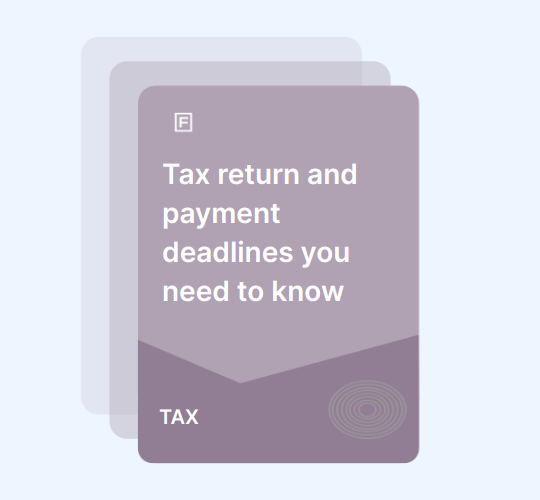

Claiming Business Mileage Allowance
Are you a business owner or an employee who frequently uses your own vehicle for work-related travel? If so, you may be eligible to claim business mileage allowance from HMRC. Claiming this allowance can help you offset the costs of using your vehicle for business purposes. In this comprehensive guide, we'll walk you through the simple steps to successfully claim your business mileage allowance, ensuring you maximize your reimbursement while staying complying HMRC compliant.
What is Business Mileage Allowance?
Business mileage allowance is a reimbursement provided to individuals who use their personal vehicles for work-related journeys. It's designed to cover the costs associated with fuel, maintenance, and wear and tear on your vehicle. HMRC sets the rates for business mileage allowance, and it's crucial to familiarize yourself with these rates to ensure you receive the correct reimbursement.
Being self-employed often means having to juggle multiple roles and tasks.
Amidst all your different responsibilities, keeping track of your business mileage can appear tedious - and it can easily become a task that you postpone time and time again. Yet, these little trips can add up, and as a small business owner, it's important that you make the most of what you can claim.
If you're newly self-employed, or just want to get a grasp on the basics of claiming your business mileage, this article is for you.
It explains the essentials, including how you can calculate your costs, the records you need to keep, and other important information that you need to be aware of.
Both business owners and employees can claim business mileage.
Are you a business owner or an employee who frequently uses your own vehicle for work-related travel? If so, you may be eligible to claim business mileage allowance from HMRC. Claiming this allowance can help you offset the costs of using your vehicle for business purposes. In this comprehensive guide, we'll walk you through the simple steps to successfully claim your business mileage allowance, ensuring you maximize your reimbursement while staying complying HMRC compliant.
What is Business Mileage Allowance?
Business mileage allowance is a reimbursement provided to individuals who use their personal vehicles for work-related journeys. It's designed to cover the costs associated with fuel, maintenance, and wear and tear on your vehicle. HMRC sets the rates for business mileage allowance, and it's crucial to familiarize yourself with these rates to ensure you receive the correct reimbursement.
Being self-employed often means having to juggle multiple roles and tasks.
Amidst all your different responsibilities, keeping track of your business mileage can appear tedious - and it can easily become a task that you postpone time and time again. Yet, these little trips can add up, and as a small business owner, it's important that you make the most of what you can claim.
If you're newly self-employed, or just want to get a grasp on the basics of claiming your business mileage, this article is for you.
It explains the essentials, including how you can calculate your costs, the records you need to keep, and other important information that you need to be aware of.
Both business owners and employees can claim business mileage.
Claiming Business Mileage - Employees
As an employer, your employees can claim business mileage from you.
If you don't reimburse their expenses or pay them less than the HMRC rates, they can claim mileage allowance relief from HMRC.
Claiming Business Mileage - Self Employed
As a self-employed person, you can claim back mileage from HMRC if you use your personal vehicle for business trips. According to HMRC, these trips are defined as journeys you make 'wholly and exclusively' for business purposes.
These include:
- Trips taken to complete work (i.e deliveries)
- Trips between two workplaces for the same job
- Going from an employee's home to a client
- Going to a temporary workplace
Here are some examples of journeys that don't count as business trips:
- Driving to a location situated near your workplace (i.e. driving to client's office located just next to your home)
- Trips in which your main purpose isn't business-related (i.e. running a business-related errand during a personal trip)
If you're unsure about what you can claim, it's best to clarify this with one of our accountants who can help with your business accounting.
Business Mileage Calculation
There are two approaches you can take:
1. Add up all your motor expenses for the year. Calculate the number of business miles as a percentage of your total miles. This percentage can be used to work out the business percentage of your costs.
2. Claim a fixed rate mileage allowance. The costs of purchase and upkeep are included in the rate.
For small businesses, the second approach is a simpler option - there are fewer calculations involved, and you don't need to work out your total motor expenses across the year.
However, there are a few points you need to take note of:
- Once you have decided on a method, you need to stick with it until the vehicle is replaced
- If your business' annual turnover exceeds the VAT threshold (set at £85,000 for 2024), you need to use the first method
- You can't use the second method if you bought your vehicle with a capital allowance
Calculating Mileage Rates Costs
Calculating Costs Using HMRC Mileage Rates
If you're going by the second approach, you'll need to refer to the table below for the rates (per business mile) set by HMRC.
Note: Currently, there isn't mileage claim for bicycling for sole traders.

Here's an example:
John is a freelancer. Over the year, he has driven 15,000 business miles using his car.

24 Month Rule for Business Mileage
HMRC has several rules in place to ensure that businesses claim mileage correctly, and the 24 month rule is one of these.
The rule applies to employees and contractors working in multiple locations. It states that you're entitled to claim travel expenses as long as your workplace is considered temporary.
There are a couple of important points related to the rule:
- Temporary workplace: A workplace is considered temporary if you've worked there for less than 24 months. After this period, you're considered a permanent employee-and therefore aren't entitled to claim travel expenses
- 40% rule: If you spend more than 40% of your working time at a workplace, it is considered a permanent location. As such, you won't be able to claim travel expenses.
Record Keeping Requirements to Claim Business Mileage Allowance
It's essential that you keep accurate records to back up your mileage claim.
You'll need to keep a detailed mileage log that records the date and location of each business trip, as well as the total number of business miles driven.
Bear in mind that keeping track of the details doesn't have to be a tedious process, as long as you're using the right tools. Apps such as MileIQ and Autotrip can facilitate the process, making it easier to log your miles consistently.





%20(1).webp)














![How to Get Unique Taxpayer Reference (UTR) Number [2024]](https://assets-global.website-files.com/5d71eeb2a19ee03e3430f50f/659fb7a03eeb8100f53a6538_unique-taxpayer-reference-utr-number.png)


![Complete UK VAT Registration Guide [2024]](https://assets-global.website-files.com/5d71eeb2a19ee03e3430f50f/6603702c1bc2d47d2e92c0fb_vat-registration-guide.webp)








